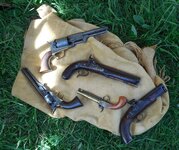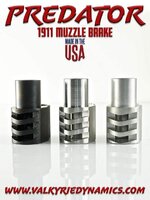- Thread Starter
- #21
If it exited AFTER the slide moved you couldn't hit a trashcan from 5 feet away without a fixed barrel!
That would only be true if the bullet exited the barrel after the barrel disconnected from the slide. This is why the slide and barrel remain locked together for a short time.














